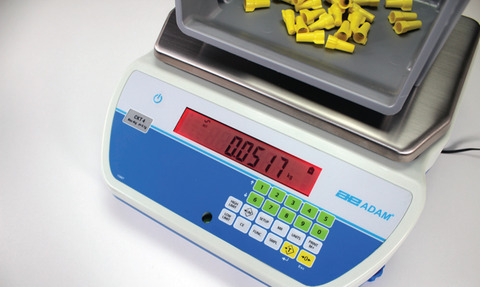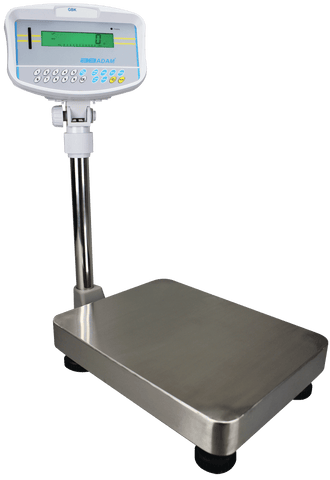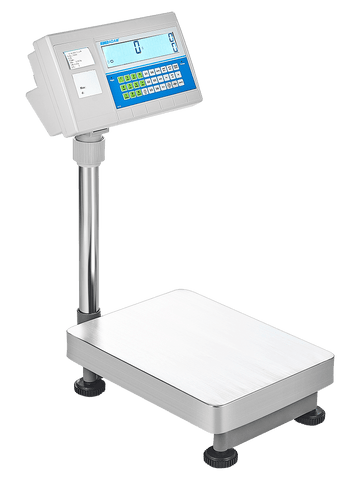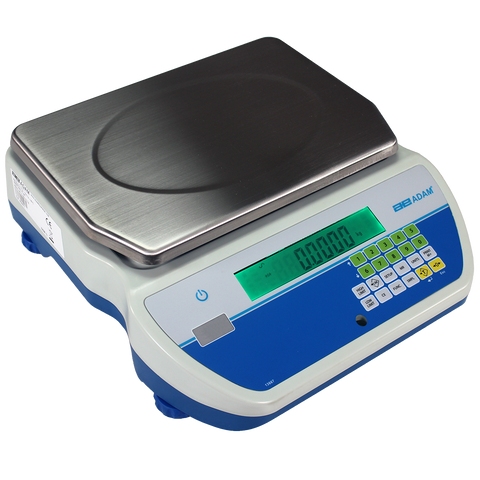
How do Checkweigher Scales Work?
Checkweigher scales are extremely helpful tools in a variety of different industries. The checkweighing function is available on many digital scales, however, dedicated checkweigher scales make the process more efficient and convenient. This blog will discuss what a checkweigher scale is, what they’re used for, how they work, and which ones we recommend.
What is a Checkweigher Scale?
To understand a checkweigher scale, you must first understand what checkweighing is. Checkweighing is a function that allows you to set high and low limits for weight. The intention is to be notified when the item you’re weighing goes above or below the limits you set. A checkweigher scale is a weighing scale specifically designed for carrying out checkweighing functions, quickly and easily. Other functions such as parts counting may still be available, but checkweigher scales are built for those who will perform count measurement tasks frequently, if not every day.
Most checkweighing scales offer dedicated buttons on the display for setting your high and low limits. Compared with regular scales, which may require pressing a sequence of buttons in a less intuitive way to reach the checkweighing function, this offers convenience. Many checkweigher scales will indicate whether your item is above, below or within your limits with some visual cue, such as LED lights.
However, the best checkweighers feature displays that change colour to red (above), green (within) or yellow (below) to make the process quicker and more efficient. A full numerical keypad is also a plus on checkweigher scales that may not be present on a regular weighing scale. A full numeric keypad allows you to type in your exact high and low limits.
What are Checkweigher Scales Used For?
What kind of professions require the use of frequent enough checkweighing to invest in a checkweighing scale? Here are just a few examples.
Quality Control
Checkweigher scales are often used for quality control purposes. If you’re producing items that don’t need to be all the same exact weight as each other, checkweighing is an excellent way to make sure that the items are still within reasonable limits. This is particularly relevant in food production. For example, bags of mixed nuts or trail mix have purposefully varied quantities of each ingredient. This can lead to each bag being different weights. However, should the bags become too heavy, your company is losing out on profits from an extra bag that could have been filled. Too light, and your customer thinks you’re ripping them off. Checkweighing allows you to set your highest and lowest acceptable limits, so you can weigh each bag and be notified when there are outliers that should not be sold.
Stock Taking
During stock taking season, you may think a parts counting scale is all you need. However, a checkweigher scale has its own job, particularly when you can’t actually count your inventory. Take a barrel of oil, for example. How do you know when a barrel of oil is ready to be refilled, or a replacement ordered? If you set a low limit on your checkweighing scale (no need to set a high limit, in this case!) and weigh the barrel, it will alert you to how far you have before you need more. If you have a counting scale that you already use to count stock, don’t fret, some counting scales offer a check counting function, which performs in the same way as checkweighing.
Agriculture and Farming
Agriculture goes much the same way. You may sell your produce, raspberries, for example, to a grocery store in clamshell containers. Checkweigher scales allow you to fill those clamshell containers quickly and efficiently, only having to pay enough attention to the display to tell whether it’s green, yellow, or red. This way you can keep track of your compensation and make sure that you’re not giving more than you’re receiving for your hard work.
When it comes to farming, checkweighing can be helpful when taking care of livestock and animals. Weighing your livestock frequently with the help of a checkweigher scale can help guarantee that they’re staying healthy. Because there can be quite a range of healthy weights depending on the animal, if any of your furry friends weigh more or less than that range, they may need dedicated care.
How Does a Checkweigher Scale Work?
It should go without saying, but not all checkweigher scales work the same way. So, for the purposes of this blog, we’ll look at Adam Equipment’s CKT Checkweighing Bench Scale.

How to Set Minimum and Maximum Weights
It’s simple to set minimum and maximum limits on the CKT thanks to the Low Limit and High Limit buttons on the display. When you press the Low Limit key, clear the old value using the CE button (AKA Clear Everything). Use the full numerical keypad to enter in the low limit you’d like. To accept, hit Tare. If you’d only like to use a low limit, you can start weighing from here. If not, press the High Limit button and repeat the process.
The CKT can store up to 10 sets of high and low limits in its memory, as well as what weighing units you’re using. If you have limits you’d like to store for use later, toggle the Store setting by hitting the Lim key. Then, press Tare. It will ask you what Position you would like to assign the limits. This is when you would assign the limit a number between 1 and 10. Using the numeric keypad, type in the limits you’d like to store, then press Tare again.
To recall those stored limits later, hit the Lim button and select Recall by pressing Tare. Enter in the number that you’ve assigned to the limits you need (We recommend keeping a record near the scale itself). Then, hit Tare. You will be able to begin weighing with pre-set limits. Easy!
How to Use the Checkweighing Function
Using the checkweighing function is simple. Press the low and high limit buttons to enter in your desired limitations, or Recall them if they’ve been stored. When you hit the Tare key after confirming these limits, the checkweighing function will be active. Then, all you need to do is weigh! The display will automatically change to yellow, green or red if the item is below, within, or above your limits.
When you want to disable the checkweighing function, head into your Low and High limits and enter zeroes. Press CE to clear the settings, and then press Tare to confirm.
Our Top Checkweigher Scales
Adam GBK Checkweighing Bench Scale

Capacities: 8kg – 120kg
Readabilities: 0.1g – 5g
Adam Equipment’s GBK Checkweighing Bench scale is the prime solution for your checkweighing tasks. The indicator features a full numeric keypad with High and Low limit buttons for ease of use. The display changes colours to green, yellow and red depending on the item you’re weighing. If you’d like to send data to a PC or printer, simply connect to the indicator with the built-in RS-232 interface. Need a bigger pan or higher capacity? Our GFK Platform Weighing Scales may be for you.
BCT Label Printing Counting Scale

No, this is not a misnomer – the BCT Label Printing Counting Scale is an example of a scale with check counting, rather than a checkweighing scale. If you find yourself parts counting slightly more often than checkweighing, the BCT may be the best way to go. In addition, the BCT can store and recall up to 1006 PLUs, or piece weights! Not only that, the BCT prints customizable labels, whether it’s QR codes, barcodes, or simply a label with the weight.
Adam CKT Checkweighing Bench Scale

Capacities: 4kg – 48kg
Readabilities: 0.1g – 2g
The Cruiser CKT Checkweighing Bench Scale is a high-performance tool designed for precision checkweighing. With a backlit, colour-changing display, full numeric keypad and durable construction, it’s ideal for various industries, including warehouses, distilleries, and manufacturing.
Need help choosing your new checkweighing scale? Contact the Inscale team, we’ll be happy to help.

Leave a comment